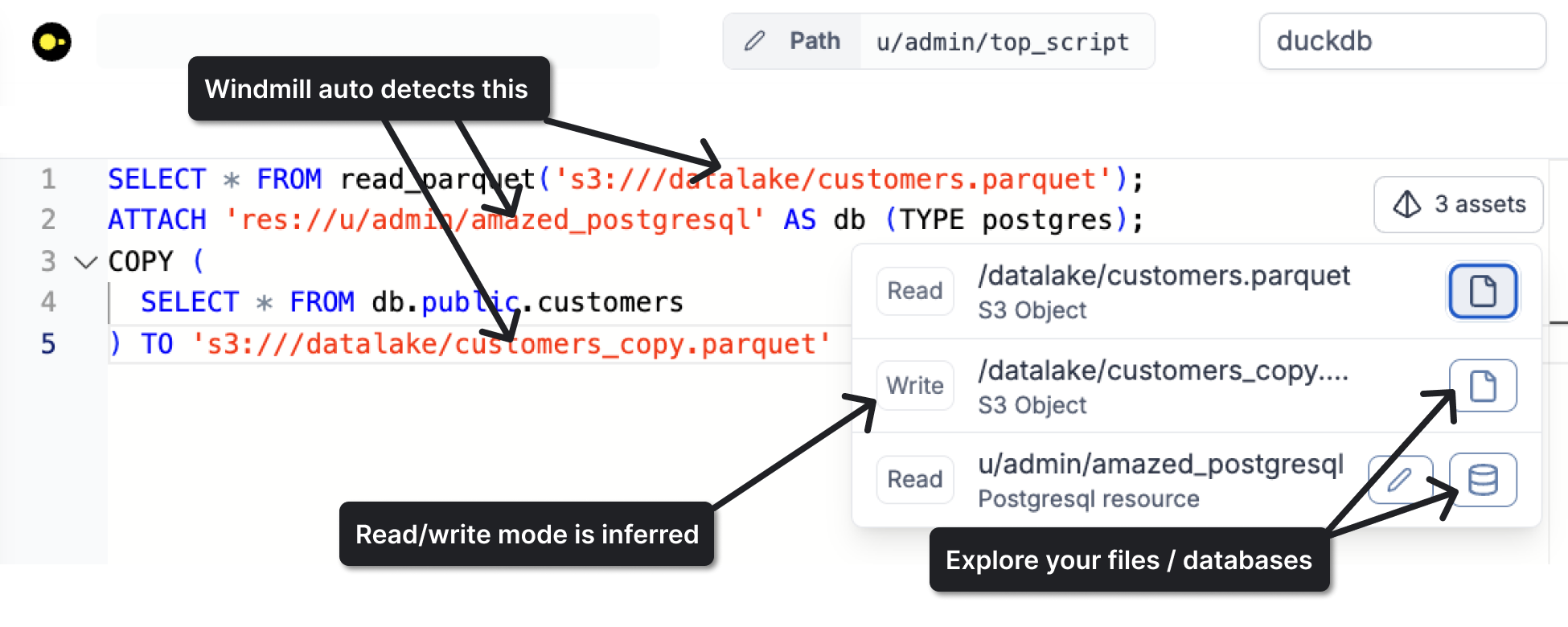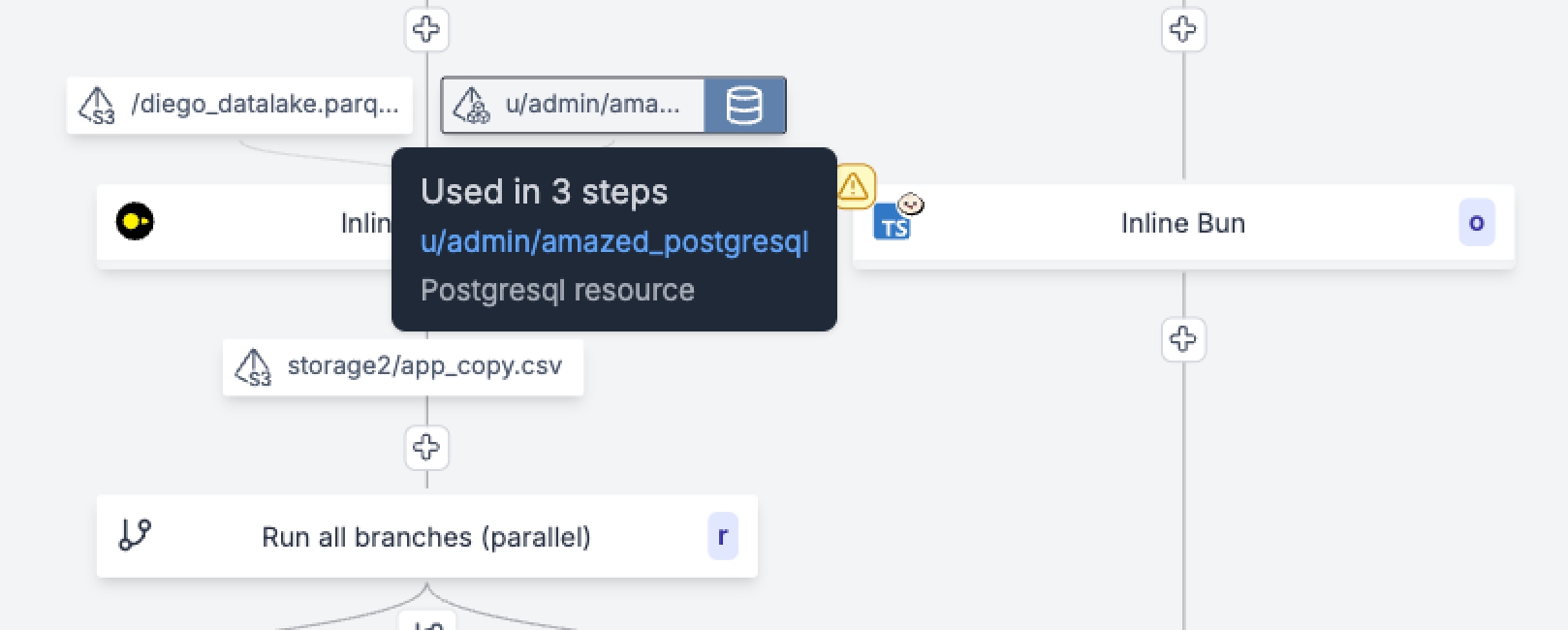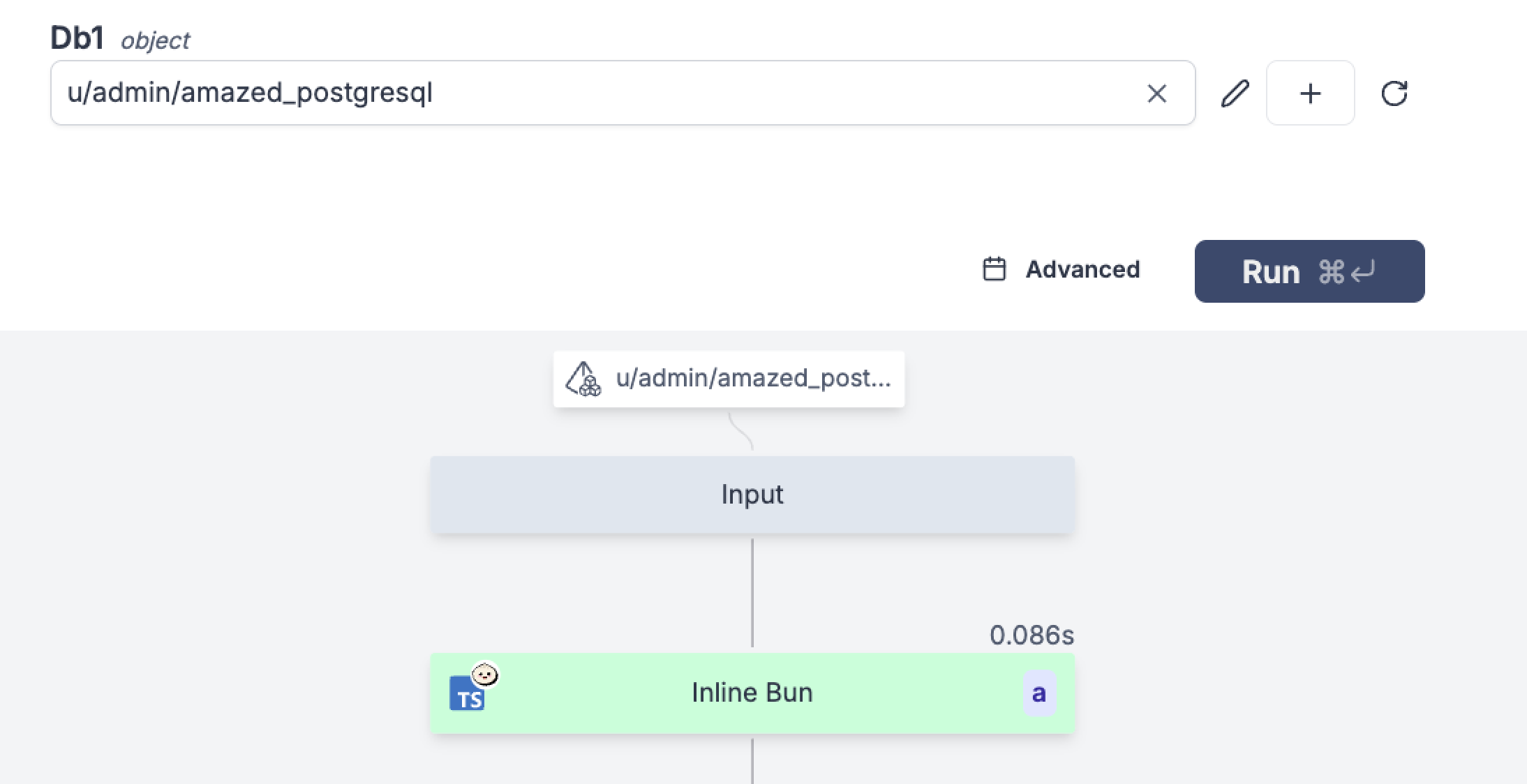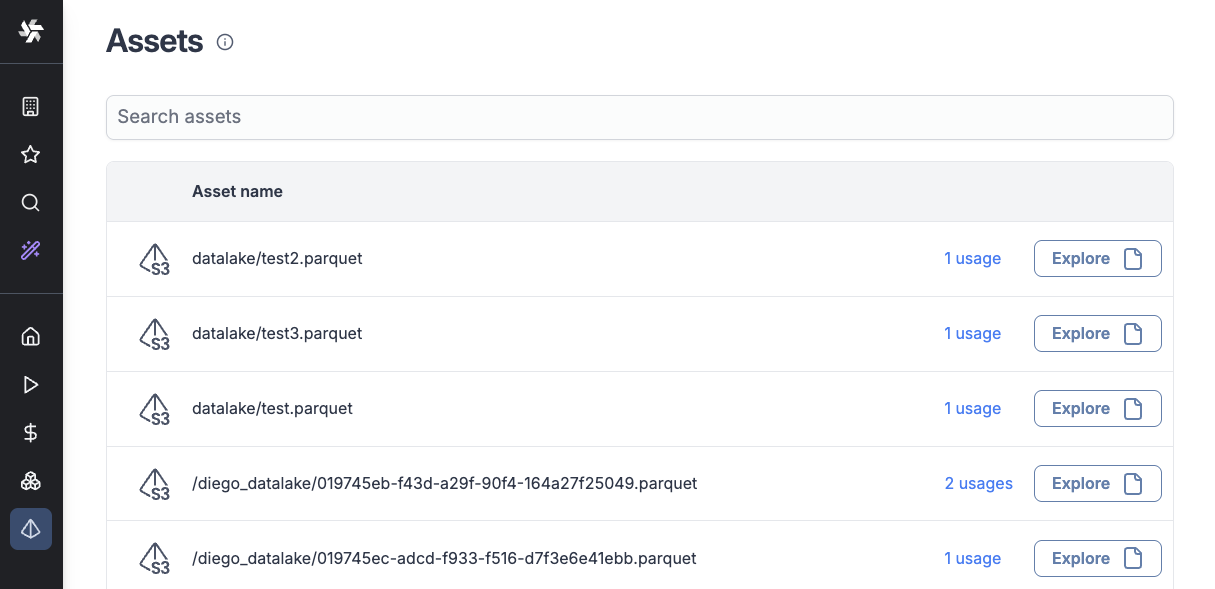Assets
Assets are designed to track data flows and visualize data sets, automatically detecting when you reference them directly in your code. Assets are referenced with URIs and include:
- S3 objects : s3://storage/path/to/file.csv
- Resources : res://path/to/resource

As of writing this, assets are supported for the following languages:
When the asset is a database resource or an S3 file, an explore button will appear next to the asset with access to the database manager.
Read / Write mode is infered from code context.
For example, a COPY (...) TO file statement is always Write.
Sometimes the Read / Write mode cannot be inferred, in which case you are able to manually select it.
You can use the Add Resource / S3 Object buttons in the editor bar for convenience :
The python and Typescript/Javascript clients now support the new URI syntax :
wmill.get_resource('res://path/to/resource')
wmill.load_s3_file('s3://storage/path/to/file.csv')
# Not using the URI syntax still works for back-compatibility,
# and is detected as an asset
wmill.load_s3_file('storage/path/to/file.csv')
Asset nodes in flows
In flows, your assets will show up as asset nodes, making data flow easy to visualize :

The Read/Write mode is used to show the asset as an input or output node.
When running a flow and passing an asset as an input, it will appear as an input of the flow in the preview graph :

Tracking where your assets are used
Assets are stored in the database upon script / flow deployment. You can see a list of all assets used in your workspace by going to the Assets tab in the sidebar.
Clicking on the usages link will show the list of scripts and flows that use the asset.
